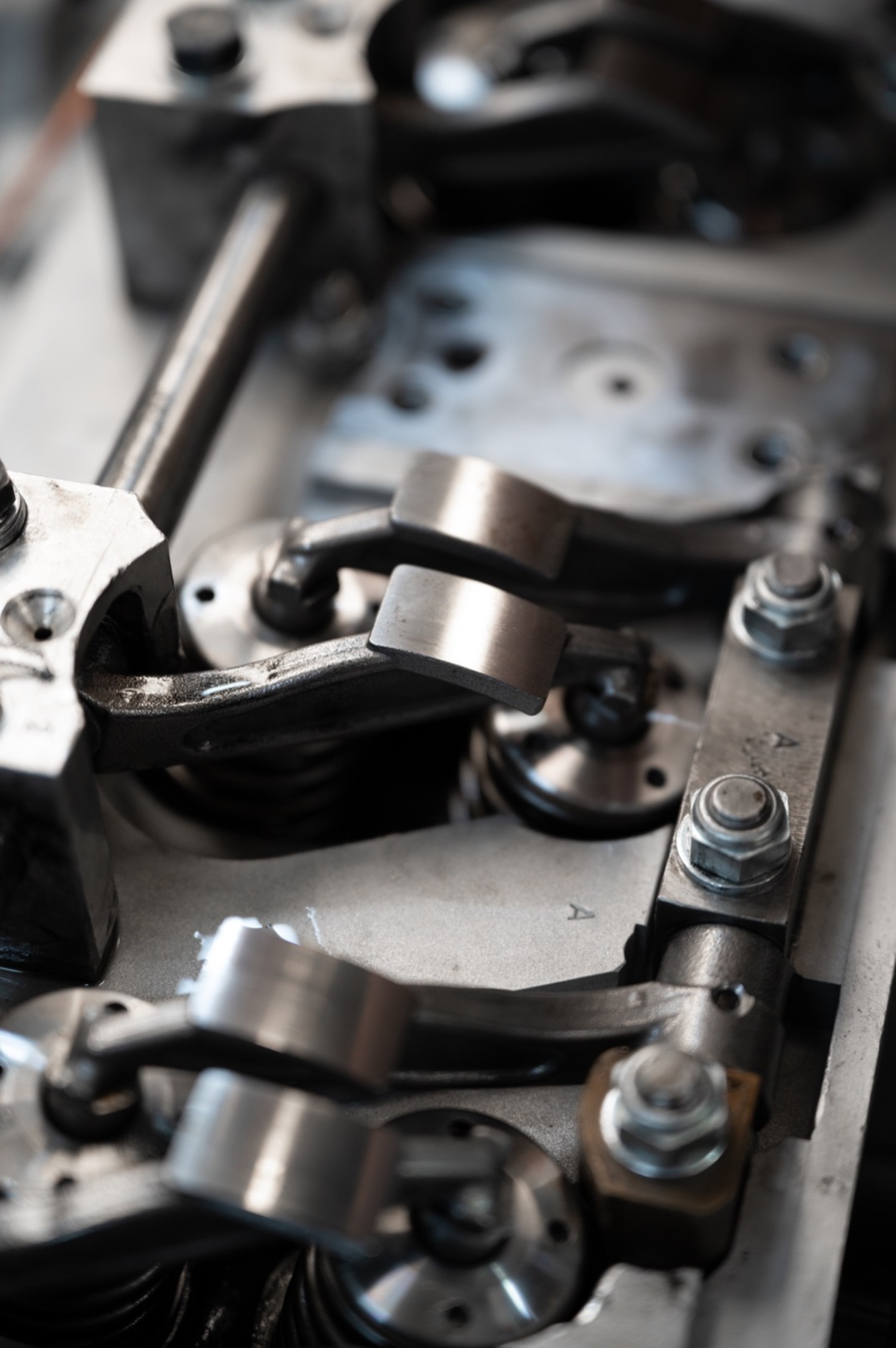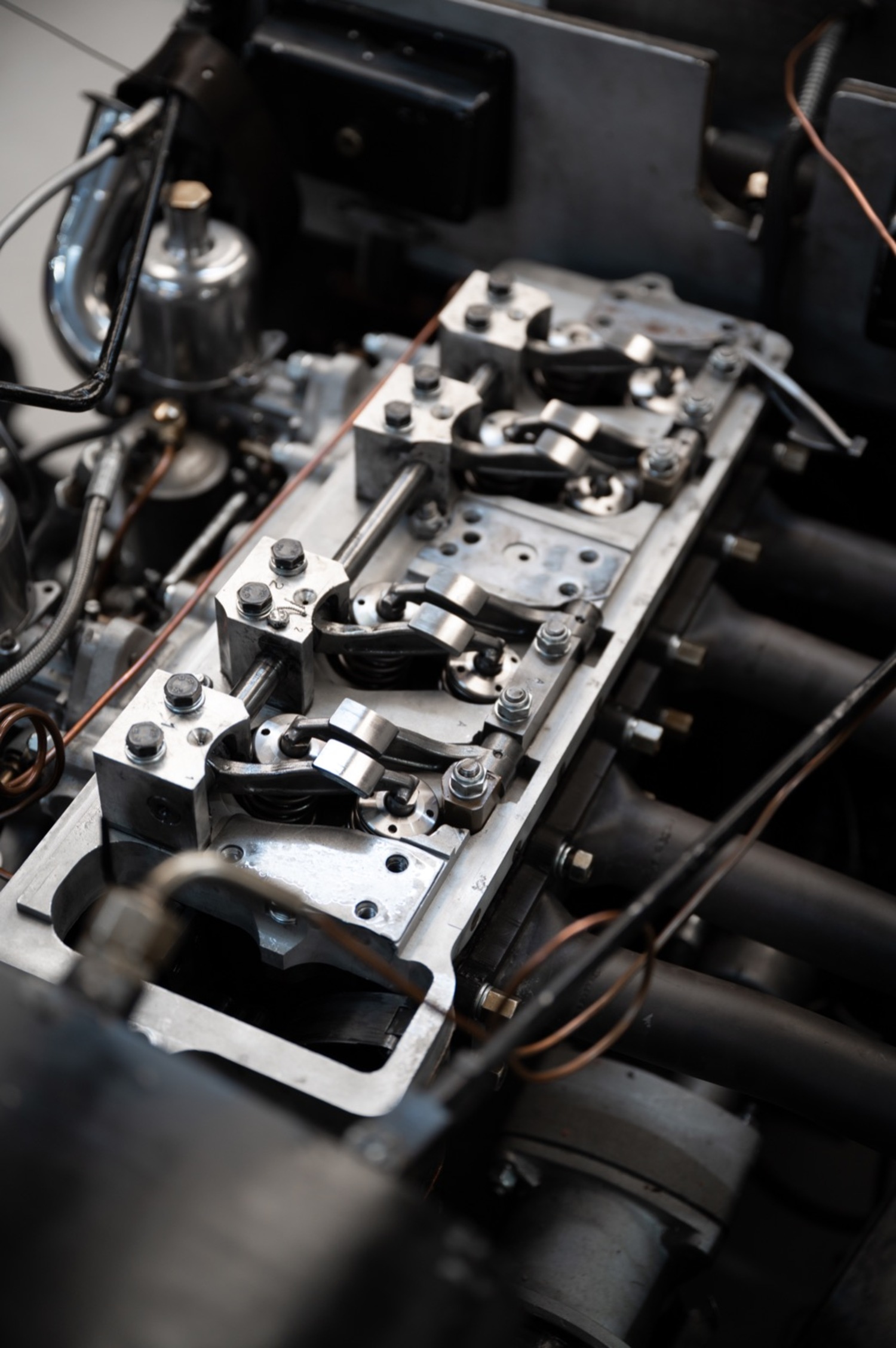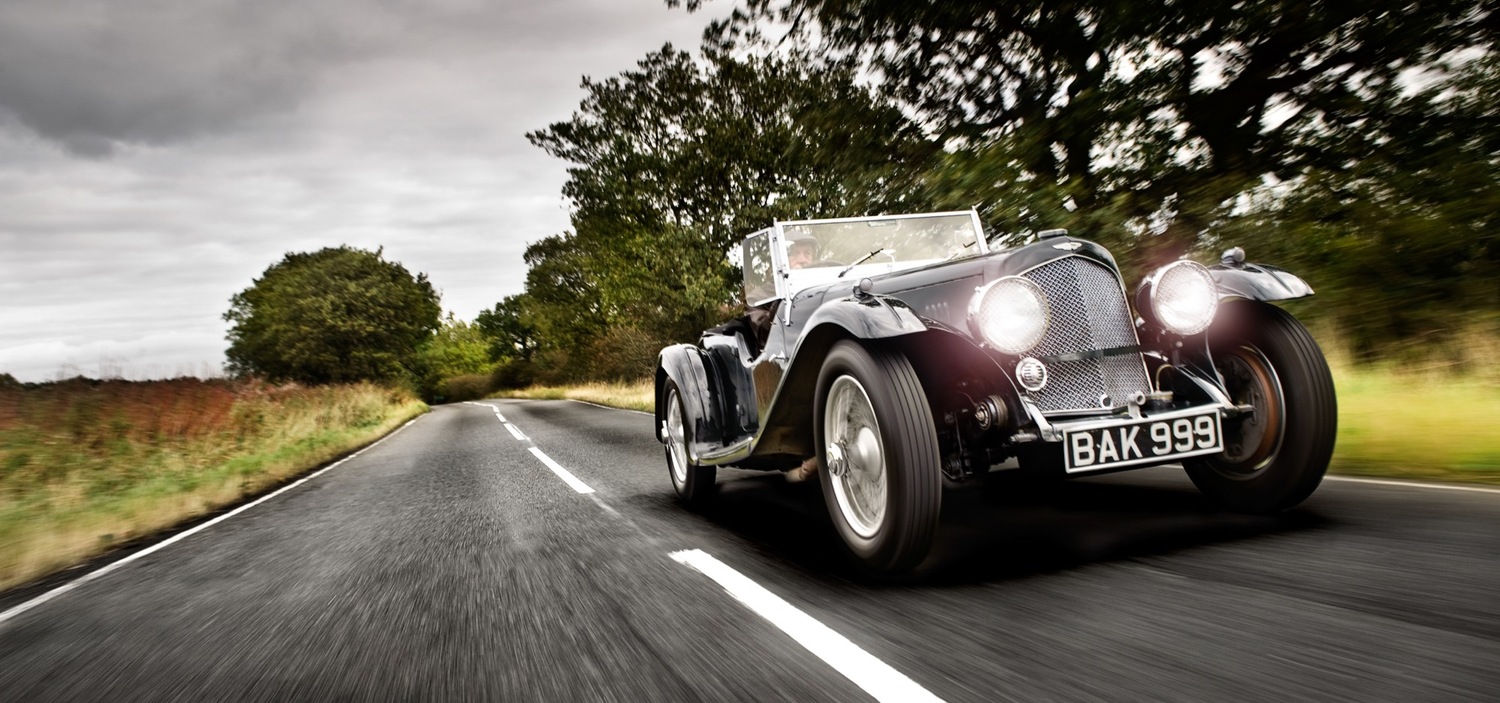
Aston Workshop have a worldwide reputation as specialists for Pre War Aston Martin and Lagonda engines, earned through decades of restoration and rebuild Pre War cars. Our engine work is backed by a 10-year worldwide guarantee, and proven by competition success in events such as the Peking to Paris rally.
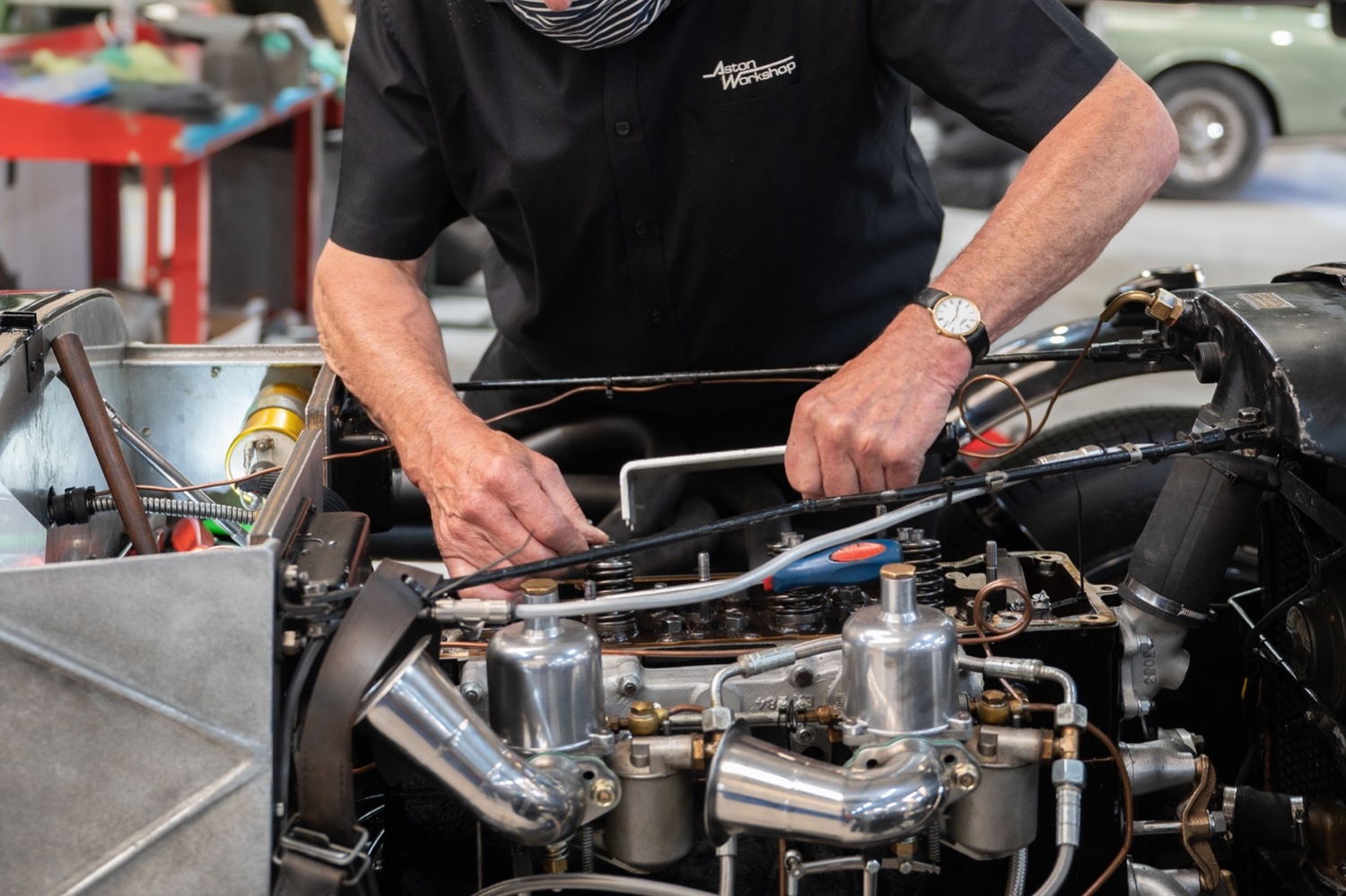
The early years – 1920 to 1926
The car company that recognisably developed into Aston Martin started with a partnership between 2 wealthy motoring enthusiasts, Robert Bamford and Lionel Martin. They formed a car company, the aim of which was to enable them and fellow friends to enter sporting trials with cars of no more than 1 ½ litre in size, and to eventually capture the interests of the wealthy sporting fraternity.
In keeping with these sporting ambitions, the first engine that was fitted to a Bamford and Martin car was powered by a 1.4 litre side-valve engine derived from a design by Coventry-Simplex of 1914. In 1920, to realise a greater power output, they commissioned HA Robb, who designed the Coventry Simplex engine, to produce a modified engine of their own design and manufacture. Its main components consisted of a split aluminium crankcase (a common feature of contemporary engines) that was bolted to a cylinder block and head in unit. With a bore and stroke of 66.5 and 107mm respectively, this gave an engine capacity of 1389cc. The side valves were pushrod operated from a gear driven side camshaft with a 3 bearing crankshaft running in white metal bearings. Ignition was by magneto. Power output was reputed to be 40 bhp.
For a number of years, the cars were achieving notable success. Further development led to the use of a 4 valve per cylinder configuration but the power output remained no more than 45 bhp, with a compression ratio of around 6.0 to 1.
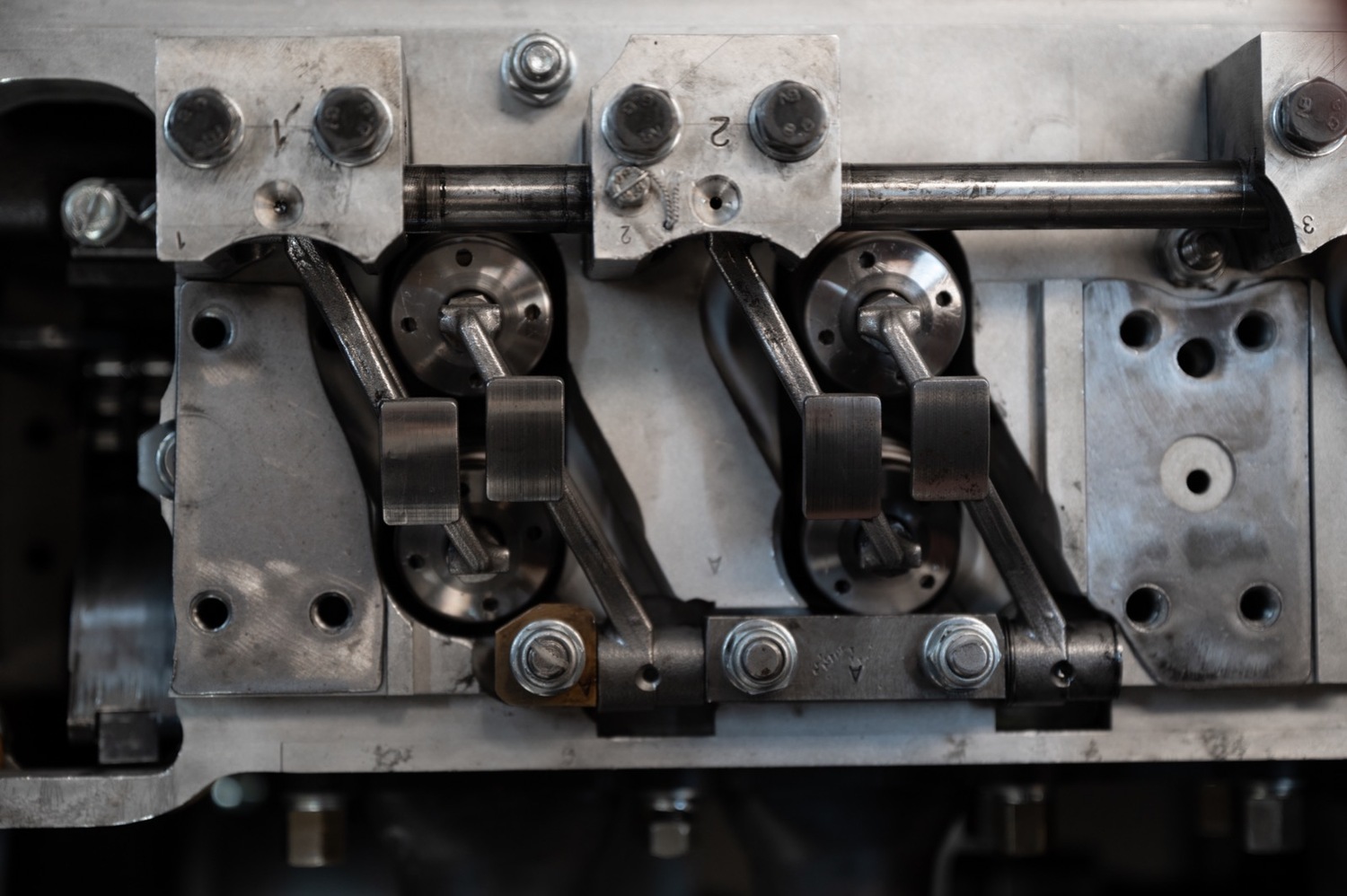
The 1.5 litre Aston Martin Series cars – 1927 to 1936
With new backing Bamford and Martin, now registered as Aston Martin Motors Ltd, was formed in 1927. It brought the company together with a Mr AC Bertelli, who designed and built a particularly high quality, robust and light bodywork. To maintain the sporting success, it was essential to move to a modified and developed engine which would enable the advantages of overhead valve operation to be used to produce engines of notably higher specific power than could be achieved by retaining side valves.
To this end, HA Robb developed a new engine block and separate cylinder head, this time incorporating two valves driven by a single chain driven overhead camshaft. The result was an engine with a bore of 69.3mm and stroke of 99mm giving an engine capacity of 1496cc. The first engines were a cause for considerable disappointment, with little if any additional power. The cause was put down to poor design of the valve and combustion chamber. Subsequent modified designs were more successful, producing a useful gain to 56 bhp with a compression ratio of 6.0 to 1 at 4250 rpm. Magneto ignition was retained. All of these engines were given dry sump lubrication, using a gear driven pump. This engine in its developed form was the basis of all the engines Aston Martin manufactured up to the 15/98 2 litre model.
This engine was subsequently powered no less than three series of 1.5 litre cars among the last of which was the Ulster, which, with a compression ratio now of 9.0 to 1, developed 75 bhp and endowed these cars with highly competitive performance for the day.

The 2 litre and the 15/98 series cars – 1936 to 1939
In 1934/5, with Aston Martin needing yet more investment funds, Mr RG Sutherland joined the board. The emphasis for Aston Martin then moved from serving customers interested in competition towards a bigger public, wanting high quality cars of sporting character. To that end a series of more luxurious bodies were offered. Inevitably weight increased and in order to maintain good performance, the 1.5 litre engine was heavily reworked with a revised bore and stroke of 78mm and 103mm respectively, giving an engine capacity of 1949cc.
Now much modified, yet retaining its single overhead camshaft, the engine developed a highly reliable 98 bhp at 5000rpm with a compression ratio of 7.75to 1. Dry sump lubrication was abandoned and the more usual wet sump lubrication was adopted. Magneto ignition was retained.

Planning for the post-war models 1938 to 1948
One of the early decisions taken by Mr RG Sutherland was to engage a new Chief designer, Claude Hill. In 1938, he was immediately given a brief to develop the design of a new car and engine that could be put into production as soon as circumstances would permit. The engine capacity of 2 litres was retained as were the 4 cylinders, but that was all that was carried over from the 15/98 2 litre engine.
With a bore of 82.55mm and stroke of 92mm, the engine capacity came out at 1970cc. Much care and thought was given to combustion chamber design with the inlet valve above the piston and the exhaust to the side. Unusually for such a configuration, the valves were pushrod operated from a side mounted camshaft. Twin SU carburettors were used and the resultant power of 90bhp was achieved. A 6 cylinder variant was also planned, but never built.
The chassis design that Claude Hill chose had as its central design objectives rigidity and light weight and to that end, he designed a light but extremely rigid space frame. To this he added a trailing arm independent front suspension and a coil spring rigid rear axle rear suspension using twin trailing arms and a panhard rod for lateral location.
Claude Hill also designed a curious looking saloon car. Given the apt title of the Atom, it featured a number of advanced body design features, of which, perhaps the most notable was the use a monocoque form of construction, a first for British car manufacture. Just 1 prototype car was made and was extensively made use of during the lean war years of biting austerity.
In more developed form, the 2 litre engine went on to power the Spa special that in 1947 won the Spa 24 hour sports car race and with other high sporting success. This car further proved the soundness of the chassis design.

